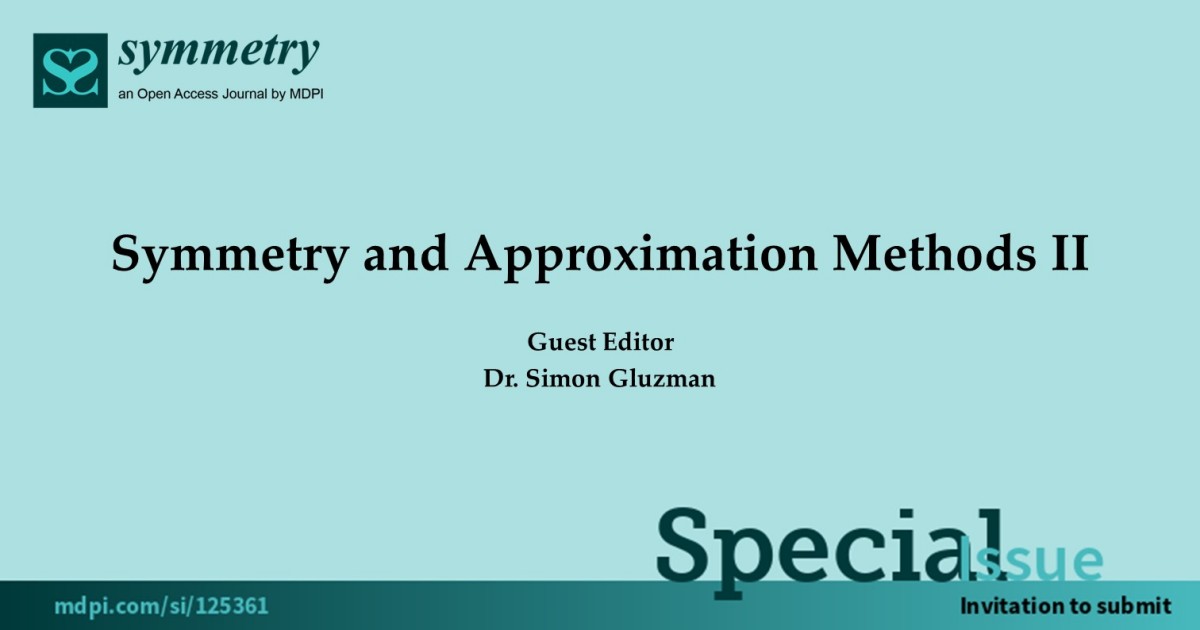Symmetry and Approximation Methods II
A special issue of Symmetry (ISSN 2073-8994). This special issue belongs to the section "Mathematics".
Deadline for manuscript submissions: 31 August 2025 | Viewed by 14069

Special Issue Editor
Interests: time series; applied mathematics; computational physics; mathematical physics
Special Issues, Collections and Topics in MDPI journals
Special Issue Information
Dear Colleagues,
Contributions are welcome on any subject related to Padè approximants with applications to realistic problems in addition to on any subject related to renormalization group applications in physics, finance, and geophysics.
Tentative contents (need more work!):
- Padè and two-point Padè—interpolation, extrapolation, and bounds;
- Euler-transformed, modified Padè approximants and corrected Padè approximants;
- Self-similarity and renormalization group as the source of roots, factors, and superexponential approximants;
- Nonperturbative conditions for accelerating convergence and optimization with minimal differences and sensitivity conditions;
- Factor and root approximants, examples of factors and roots, and interpolation as well as critical point calculations;
- Direct methods for critical index calculations: factors, D-Log Padè, D-Log roots, combined Log–Padè approximants, and test examples;
- Critical index as a control parameter and calculation with roots;
- Accelerated convergence of factors and D-Log Padè approximants;
- Additive and D-Log additive approximants for interpolation;
- Phase transitions, effective viscosity of suspensions, and the conductivity, elasticity, and permeability of landslides, earthquakes, and market crashes.
Dr. Simon Gluzman
Guest Editor
Manuscript Submission Information
Manuscripts should be submitted online at www.mdpi.com by registering and logging in to this website. Once you are registered, click here to go to the submission form. Manuscripts can be submitted until the deadline. All submissions that pass pre-check are peer-reviewed. Accepted papers will be published continuously in the journal (as soon as accepted) and will be listed together on the special issue website. Research articles, review articles as well as short communications are invited. For planned papers, a title and short abstract (about 100 words) can be sent to the Editorial Office for announcement on this website.
Submitted manuscripts should not have been published previously, nor be under consideration for publication elsewhere (except conference proceedings papers). All manuscripts are thoroughly refereed through a single-blind peer-review process. A guide for authors and other relevant information for submission of manuscripts is available on the Instructions for Authors page. Symmetry is an international peer-reviewed open access monthly journal published by MDPI.
Please visit the Instructions for Authors page before submitting a manuscript. The Article Processing Charge (APC) for publication in this open access journal is 2400 CHF (Swiss Francs). Submitted papers should be well formatted and use good English. Authors may use MDPI's English editing service prior to publication or during author revisions.
Benefits of Publishing in a Special Issue
- Ease of navigation: Grouping papers by topic helps scholars navigate broad scope journals more efficiently.
- Greater discoverability: Special Issues support the reach and impact of scientific research. Articles in Special Issues are more discoverable and cited more frequently.
- Expansion of research network: Special Issues facilitate connections among authors, fostering scientific collaborations.
- External promotion: Articles in Special Issues are often promoted through the journal's social media, increasing their visibility.
- e-Book format: Special Issues with more than 10 articles can be published as dedicated e-books, ensuring wide and rapid dissemination.
Further information on MDPI's Special Issue polices can be found here.





